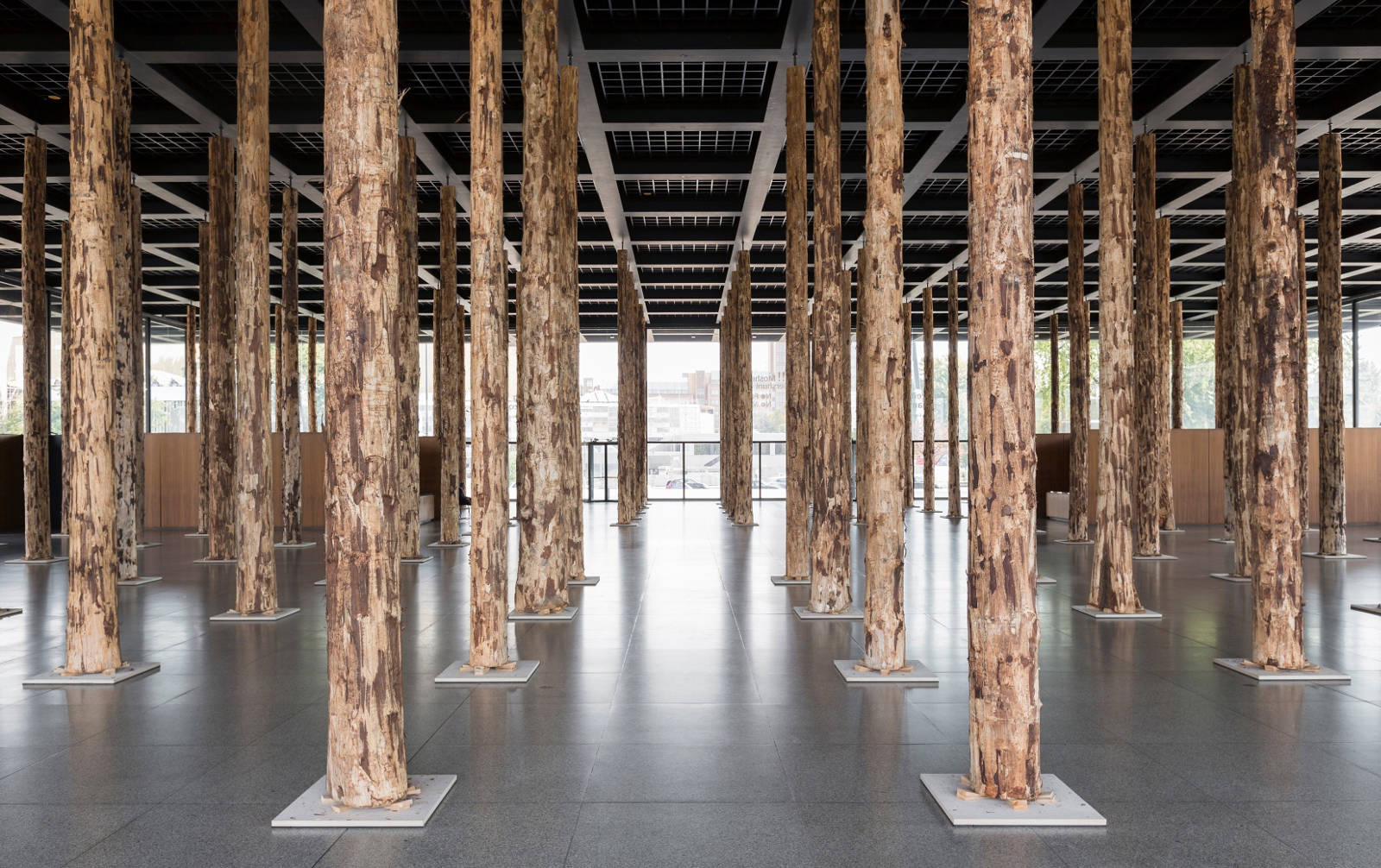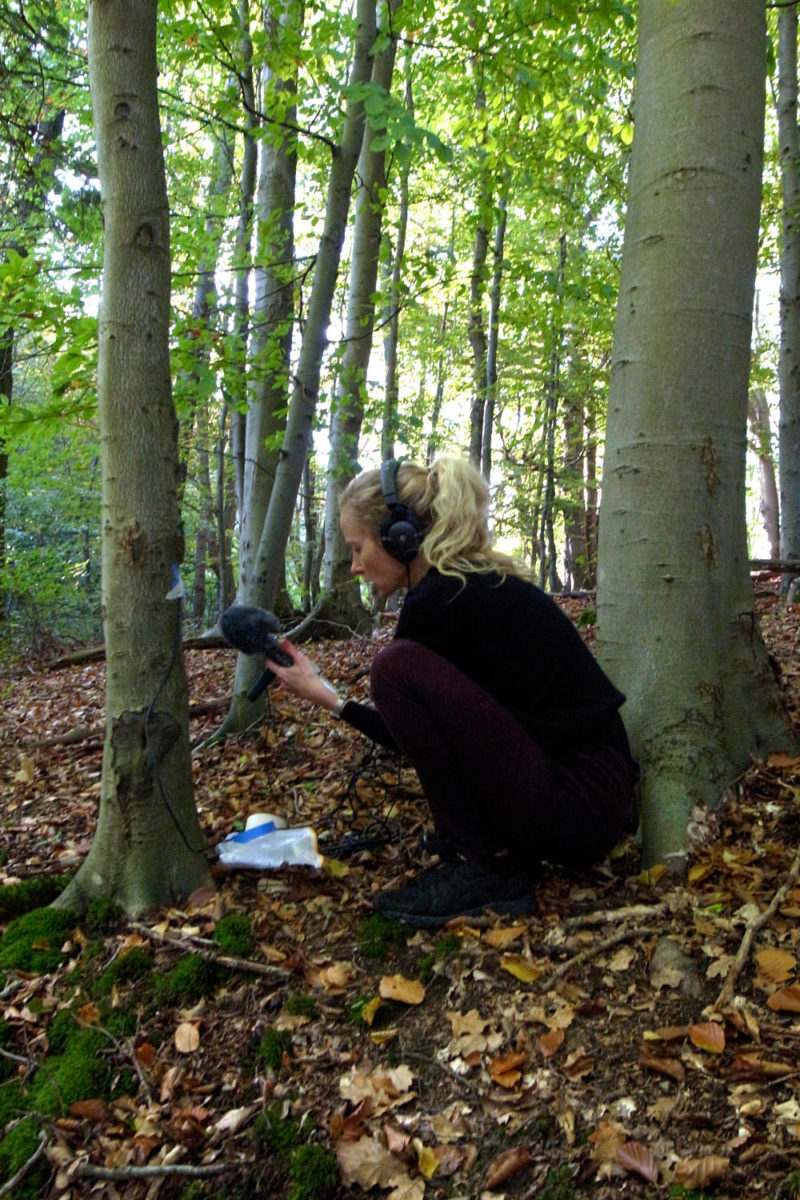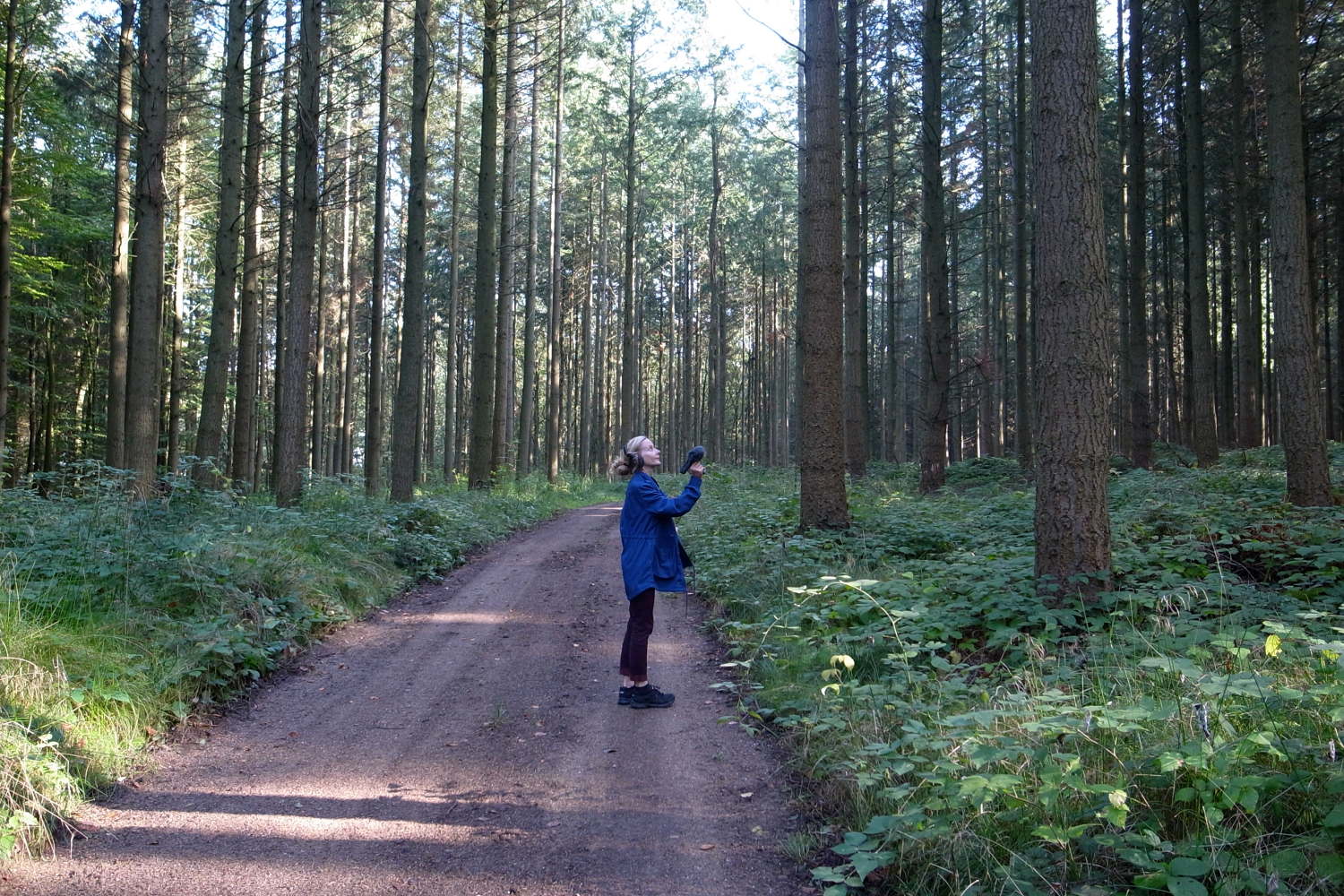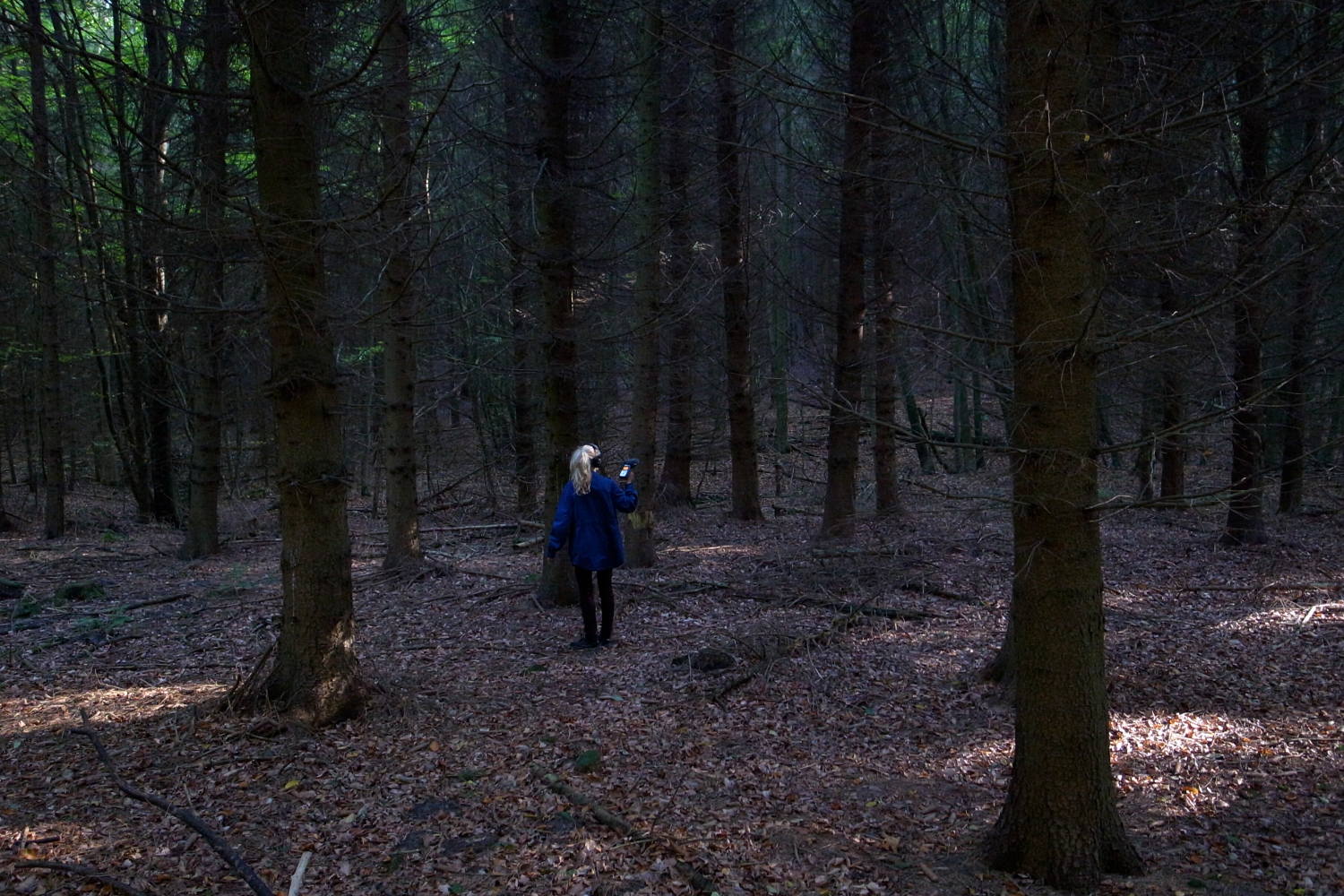Sounding Landscapes
In early October 2014, I traveled to a forest plantation in Mecklenburg, in the north of Germany and west of Rostock, to make field recordings of the “absence” of a large section of trees that had recently been removed from the site and installed in the Neue Nationalgalerie in Berlin, as part of the gallery’s current exhibition.
History of the site
The trees in this forest—a combination of native fir trees and Douglas firs imported from North America for their robust and rapid growth patterns—were planted by humans over a hundred years for eventual cultivation. The plantation site had been claimed by the new East German government not long after the partition of the German state, and its original owner—the forester who had imported and cultivated the Douglas firs and planted the trees—was sent to a labor camp in Siberia for eleven years, for the crime of private land ownership. The land was then subdivided into smaller plots, each allocated to residents in the nearby township. However, these subplots were not large enough to provide any supportive means other than occasional firewood. Over this period, either the trees were left untouched, or the plots were stripped to fuel the coal ovens of the people to whom the land had been redistributed. Normally, plantation forest firs would be harvested at about seventy years. However, the traditional lifespan up to the harvesting of the trees at this site coincided with the fall of the Berlin Wall, and the handover of ownership of the land to a newly formed, unified German government. When the stewardship of this land was passed to the repatriated German state, the government was hesitant to harvest a site whose ownership was in dispute. The trees were left to grow, while the government adjudicated over the very human concern of property. As such, the trees that remained on site were granted a lifespan longer than the normally truncated life dictated by human industry. They have become “wild.” After reunification, the children of the original owner of the site sought to have the land returned to them; however, the attendant government, in all likelihood concerned with the costs associated with a difficult reunification process, decided not to grant their wish. The family therefore decided to purchase a smaller section of the original land, and continue the plantation ambitions that had so interested their forefathers. Mecklenburg traditionally was considered one of the poorer districts in Germany, and the reason for this is largely agricultural; the land cannot produce crops at the same rate as other German regions, and was used mostly for grazing cattle. This conception of Mecklenburg as “poor” relates to land that is valued in terms of its utilitarian (agricultural) use only. Surrounding the site of the plantation are numerous wind farms, whose tall, white wind turbines now mark and redefine the landscape sonically and visually—a repurposing and re-aestheticizing of the landscape for utilitarian purposes.
Plantations as wilds
This forest site is a plantation—and as such is a human intervention or construction. However, having been left untouched for over a century, the construction now appears as “wald”/“wild,” the clean geometry of its planting having been overtaken by the chaotic growth of an ecosystem vested only in preservation and propagation. This is a site whose apparent “wildness” was cultivated: a furious growth intended to serve human needs only, but whose foreseen utility political and economic intervention obfuscated. A tree plantation is a mildly confusing concept in relation to the preservation of ecological landscapes. Deforestation of “old growth forests”—while not matched—is at least paralleled by a rise in the cultivation of forest plantations. These plantations are becoming the new wilds, the new sites of plant growth—now allied to a utilitarian and pragmatic design. Here, both “foresters and futurists share a long range perspective”1—an interest in the preservation of plant growth, because of man’s interdependence upon it, and an ability to conceive of productive timespans longer than the individual human lifespan.
Sounding the landscape—“explicitation” of anthropogenic landscapes
Ambient field recordings were made at the site—an attempt to affectively listen to and make “audible” the immanent resonances of the site. Contact-microphone recordings of the trees that remained were also made, as a way of collecting a measure of their energetic resonance. This project—as with much of my practice—is vested in the idea of an “explicitation” of the minor rhythms immanent to life that are occluded by its major, more hegemonic forms. These are the rhythms and resonances that rest within an anthropogenic landscape, but that require special, minor attention in order to access their affective potential. This is to argue for art’s role in understanding the movements and transformations immanent to anthropogenic landscapes—an art of explicitation that seeks to make visible the minor rhythms and resonances of which the landscape speaks.
These forest recordings form part of a series of sound works produced in collaboration with Clara Jo, titled “Untitled Sound Works, 1968–2014,” which was exhibited at the Neue Nationalgalerie in Berlin in November 2014, as part of the Festival of Future Nows.




